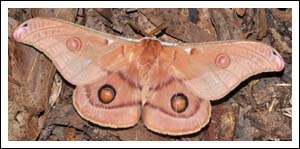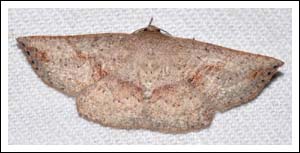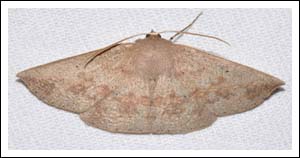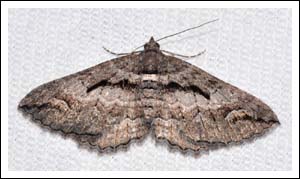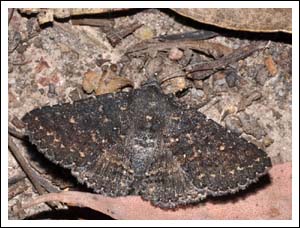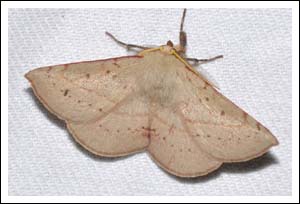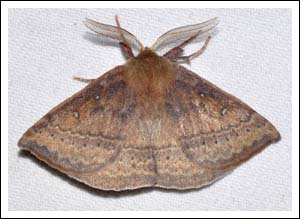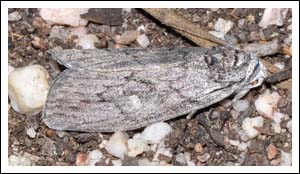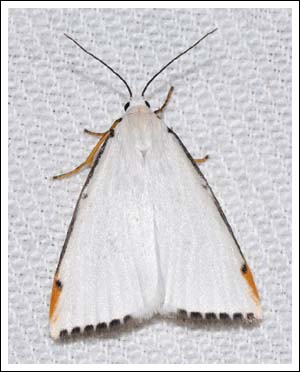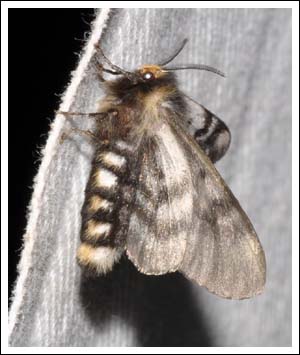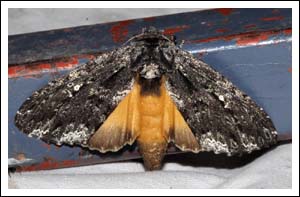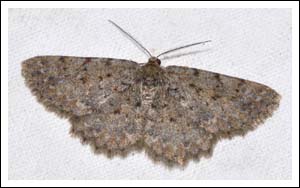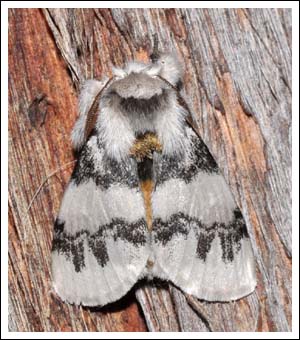A very calm warm night by Gladstone Creek began with large numbers of scarab beetles, bark cockroaches, and flying ants attracted to the light and generally making things difficult. Luckily moths were slow to arrive, giving the nuisance insects time to wear themselves out and settle on the groundsheet. Geometrids were well represented in the night’s tally, with quite a few Noctuids and the usual complement of smaller moths. The last to come in as pack up time approached was an Emperor Gum moth, Opodiphthera eucalypti. (Saturniidae)
Circopetes obtusata (Oenochrominae) had often been photographed with all individuals being female, but on this night a male arrived. It refused to settle on the sheet but after a lengthy pursuit with the torch it was photographed in a natural setting.
Both species of Bracken Moth, Idiodes apicata and Idiodes siculoides (Boarmiinae, Lithinini) were on the wing, the latter can be identified by the pale strip between the antennae and the pale leading edge of the forewing.
Idiodes apicata.
Idiodes siculoides.
MOV Volume 3 notes that the Black-lined Carpet, Chrysolarentia plagiocausta (Larentiinae) is widespread although not commonly encountered.
The Varied Grey, Hypobapta tachyhalotaria (Geometrinae) is a regular in the area.
Victorian moths in the Praxis genus, (Noctuidae) are under revision at the moment.
Two Anthelids came in, Anthela acuta, and Anthela repleta. Both these species are variable and more than one species may be involved for both. (MOV Volume 1)
Anthela acuta.
Anthela repleta.
A Tuft-moth to conclude, the Inscribed Tuft-moth, Nola phaeogramma, (Nolinae)
All moths photographed on the night can be seen here.
References and further reading,
Moths of Victoria Volumes 1,2,3,4, and 7.
Click images to enlarge.

